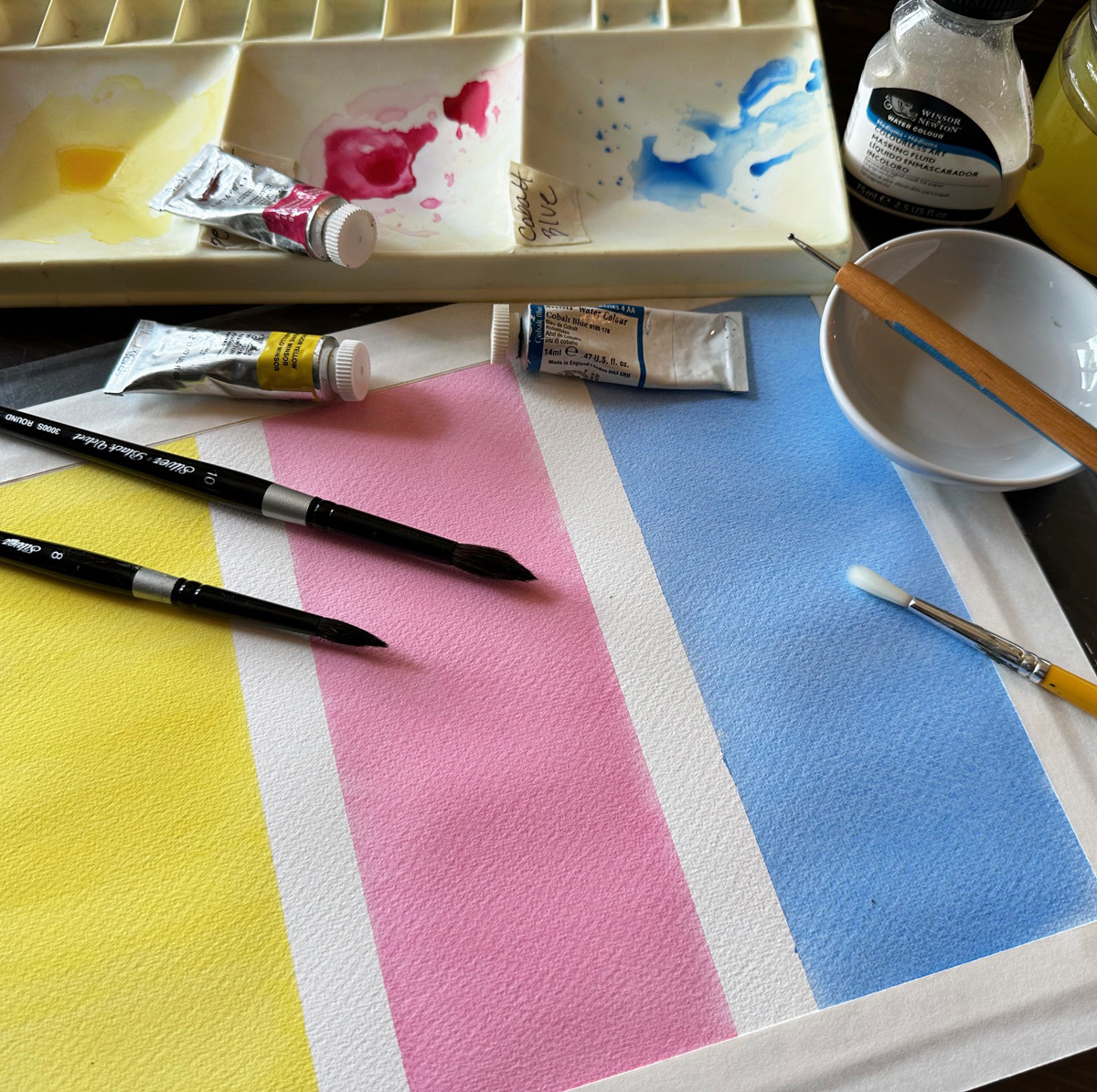
Description
In this watercolor workshop, participants will learn how to control water and pigment to achieve better results in their paintings. The workshop covers essential techniques such as painting a flat watercolor wash and painting the background around a shape protected with masking fluid. It also includes practice exercises on lifting techniques to lighten watercolor or rescue a shape in a painted area. Additional tips will be provided on using masking fluid effectively and caring for watercolor brushes, helping artists of all levels improve their watercolor skills.
About the Instructor
Patricia Schmidt has been drawing and painting for over 30 years and is known for her super-realistic paintings alive with color. She is a signature member of the Northwest Watercolor Society and the Watercolor Society of Oregon; a charter member of the Colored Pencil Society of America; and a member of the Oregon Society of Artists and SPLASH, a professional artist group. She has illustrated a children’s book, “A Dolphin Named Destiny”, published in 2024. Her paintings are published in the watercolor books “Splash Retrospective: 20 years of Contemporary Excellence” (2013), “Splash 14: Light and Color” (2013), “Splash 12: Celebrating Artistic Vision” (2011) and the Winter 2005 “Watercolor” magazine. She has taught drawing, watercolor and colored pencil classes as adjunct faculty for several colleges as well as workshops at Sitka Center for the Art and Ecology and at other Oregon locations. Please visit the Portland Art Museum’s Rental Sales Gallery located at 1237 SW 10th Ave, Portland, Oregon, to view her paintings.
Learn More
www.patriciaschmidtart.com
Materials List
You will need to bring:
Watercolor tube paints, specifically Cobalt Blue, Permanent Rose, and Winsor Yellow, will be used for practice exercises. If participants already have a blue, pink or red, and any bright yellow watercolors they would like to use, they are welcome to bring them along. Patty mostly uses Winsor Newton and Daniel Smith brands, but other brands are acceptable.
Watercolor paper required is Arches 140# cold-pressed watercolor paper, cut into six 11” x 8 ½” pieces. Scraps of the same paper are needed for color testing.
Two backing boards large enough to tape the Arches watercolor paper to are needed. Suitable examples include Gator board, acrylic scrap board, foamcore board wrapped with contact paper, or an old cutting board.
A mixing tray, such as a divided small palette tray, butcher tray, or white plastic plates, will be necessary. Patty recommends using a divided small palette tray with three wells, particularly useful for background washes.
Two water containers are required, one for rinse water and one for clean water.
Watercolor brushes: at least a couple round brushes, sizes #8 and #10, with a nice point; and a ½” or ¾” flat brush. Please bring your soft squirrel or sable brushes. Synthetic brushes don’t hold enough water, run out of paint quickly and will leave streaks within flat washes because the brush hairs are stiffer. If you need to purchase brushes, Patty highly recommends Silver “Black Velvet” brushes. These brushes are a combination of synthetic and squirrel hair, hold water well in the belly of the brush and are not very expensive. The Black Velvet brushes work quite well for our painting exercises.
Participants should bring Saral Wax-Free GRAPHITE (not colored) transfer paper or borrow Patty’s. Winsor Newton Art Masking Fluid is required, but it’s important to avoid “Permanent Masking Fluid,” as it won’t rub off.
A stylus or a sewing needle stuck in a cork handle, along with a small inexpensive synthetic brush to apply the masking fluid, will be useful, along with a small bar of soap.
A small dish is needed to pour in the masking fluid during application, preventing spills from the full bottle. A magnifying glass will also be helpful for easily seeing edges when masking. Patty found hers at an office supply store.
Paper towels and facial tissues (avoiding “ultra-soft” tissue due to lotion) are needed, as well as masking tape and a roll of toilet paper (to wrap with paper towel for water control).
Participants should bring an ultra-fine black “Sharpie” marker pen, a red or blue pen, a pencil, and a white plastic eraser.
For brush care, “The Master’s” Brush Cleaner is recommended. An optional eye dropper for adding water to watercolor mixes can also be useful.
Provided by instructors:
Preprinted exercise paper
Contact paper
Mr. Clean Magic Eraser